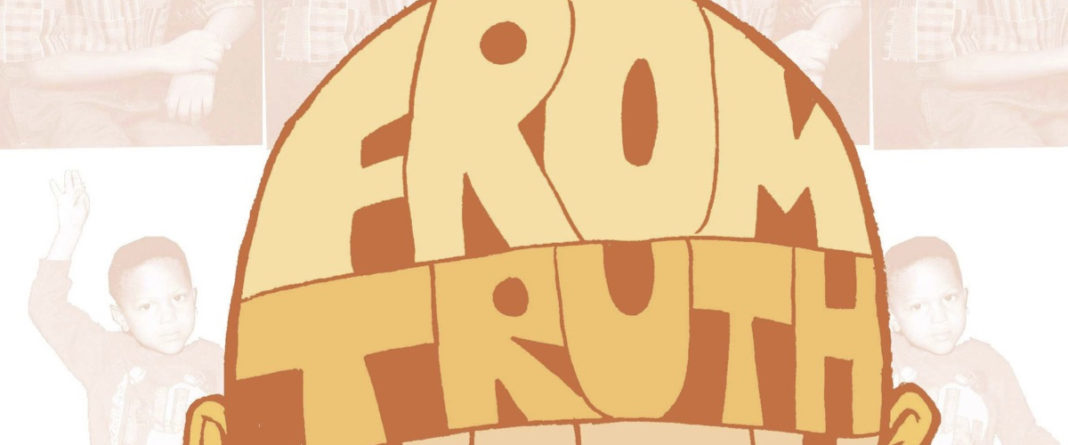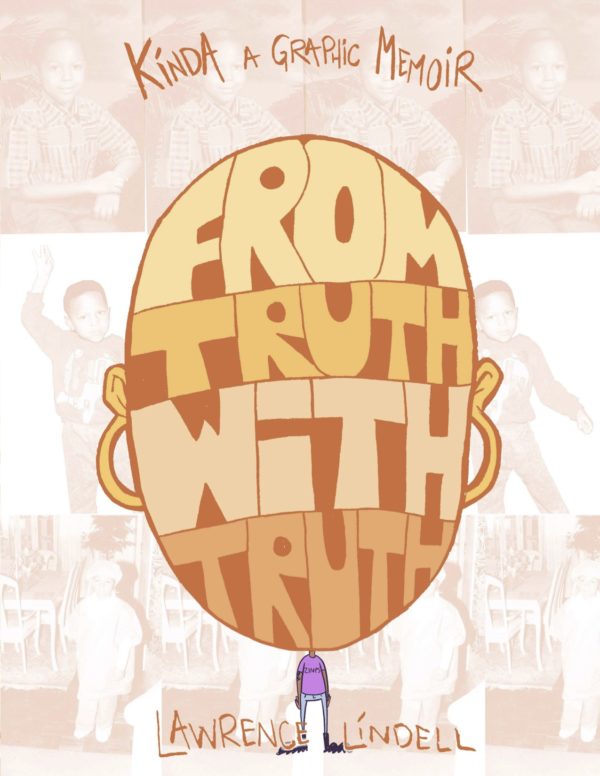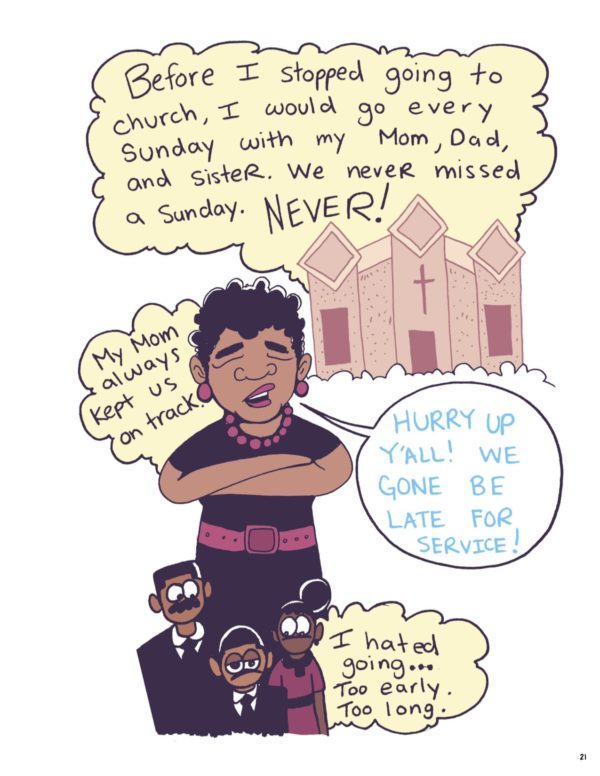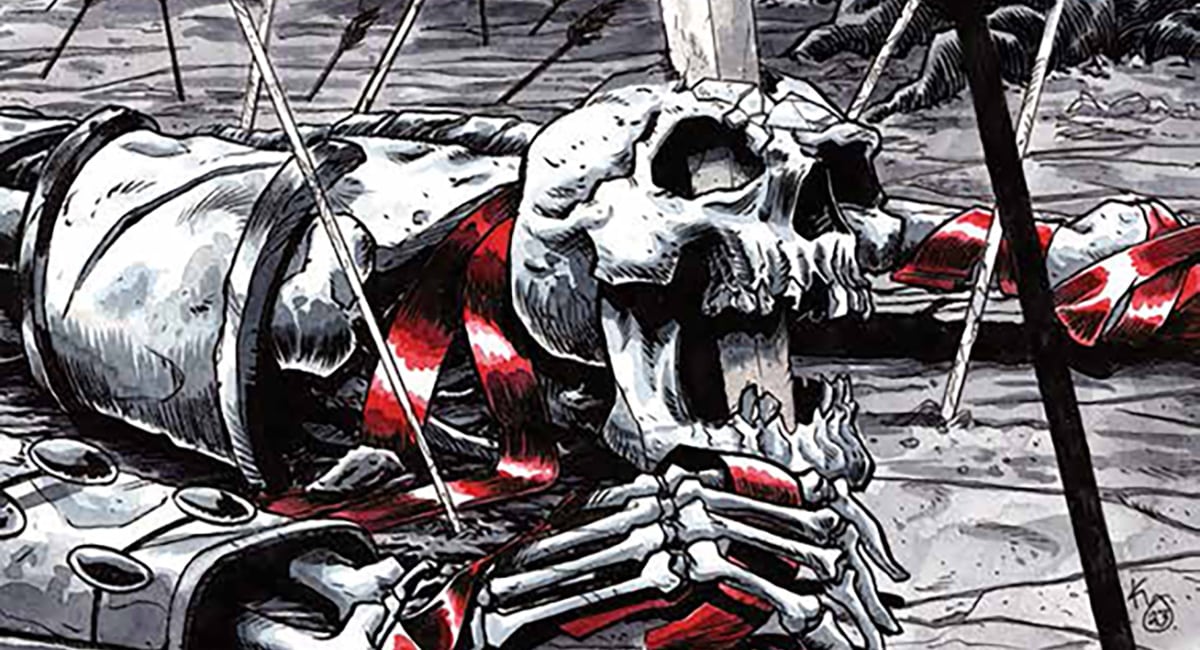From Truth With Truth
By Lawrence Lindell
A lot of people hurt inside and the longterm effects lead to damage that’s hard to just brush off. I don’t know if my generation is the last to be raised with the order to “suck it up,” but I do know that children don’t typically suggest other people “suck it up.” That’s something adults do after a lot of conditioning during childhood. It’s not feelings that were forbidden, but weakness, particularly in men, but certainly in women, too.
That’s one of the things that has changed as the younger generations gain more control of cultural norms. “Suck it up” is becoming an attitude of the past as true discussion of mental health is put out there instead. And not only do younger people refuse to hide their mental health realities, but they have the actual language for these discussions. I didn’t have those words when I was a teenager, so I envy them this empowerment.
Lawrence Lindell’s self-published comic From Truth With Truth is as perfect an example of what has changed and why it is good as you are likely to find. Lindell unapologetically lays out the challenges he has faced in life and what they mean in regard to who he is. He subtitles it “Kinda a Graphic Memoir” because it is that, but it’s other things as well. In some ways, it’s a personal accounting of where he was and where he is that I’m sure is helpful to Lindell to put down on paper. It’s also a pep talk that stems from a section of the book he talks about connecting with other people who faced similar challenges and how those conversations were helpful in getting along in life.
From Truth With Truth starts Lindell’s story by tracing the things that early in life meant so much to him — particularly his drums and a local comic book store, both of which provided some meaning for him as his parents got divorced. Anyone who’s endured a divorce — or shared a home with a dysfunctional marriage — can attest to the power of such things in a young life, so I could identify with Lindell here.
He also dealt with displacement as he moved out with his mother, lived in temporary situations, dealt with the loss of these things that gave him comfort, and received no help for the distress heaping inside him. Continuous instability exasperated by the stress of his homelife surmounted, and eventually, he started showing signs of bipolar disorder, including a months-long manic episode in art school as a teenager. More displacement and chaos followed, manic periods of diving into work and depressive ones in which Lindell was unmovable from the bed.
This was the rhythm of Lindell’s life until he hit a point where it wasn’t. What changed? Well, connection and purpose, and also a lot of internal work. Lindell puts it succinctly when he says, “I started to own responsibility for my life” and puts the process in terms of a reclamation of his life.
Lindell says upfront that the way the narrative is crafted reflects some of the things he talks about in the book. “My mind needs to jump around and be free,” is how he puts it, and the art is no different. It’s super-energetic and it’s pacing that is almost more than I can keep up with. It’s as excited as the words it accompanies, and at times takes over in order to punctuate certain experiences, particularly repetitive ones, that can’t be captured by words alone.
But it’s this energy that gives the book it’s singular personality and perhaps also that pep talk quality that I mentioned. That’s all good because what Lindell is endorsing here is connection. He’s putting himself out there for a good purpose and I can’t help but admire that. It’s over 100 pages that truly seems to represent who he is in an effort for positive outreach, never feeling self-indulgent but rather communal and like the starting point of a conversation he’s hoping to have. I’ve read plenty of comics about mental health issues, but From Truth With Truth is the first one that felt like someone offering their hand to the reader.











